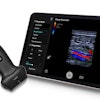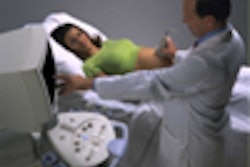(Ultrasound Review) An evaluation of the clinical utility of bilateral whole-breast ultrasound in women with dense breast tissue was published in the December issue of Radiology. Dr Stuart Kaplan of the Strax Institute, Florida, studied 1,862 women who had normal clinical and mammographic assessment, and category 3 or 4 breast density according to the BI-RADS.
Only patients with heterogeneously dense (category 3) or extremely dense (category 4) were eligible for inclusion in the study. Bilateral whole-breast ultrasound was performed using high-frequency linear array transducers of 7 MHz or greater. This usually took 10 minutes but examination time was longer in women with large breast and when abnormal areas were found.
Twenty-three percent of women were found to have one or more of the following ultrasound features:
- cyst >1cm
- solid mass
- architectural distortion
- acoustic shadowing
Cysts less than 1cm in diameter were considered an incidental finding and not reported. A total of 102 interventional procedures were performed that included 40 aspirations of complex cysts, and five aspirations to differentiate complex cystic versus solid masses.
Complex cysts were aspirated with a 20-gauge needle and core biopsies were performed using a 15-gauge needle with an average of 5 core samples. Fifty-seven core biopsies were performed in 56 patients, and six breast cancers were diagnosed. Of the biopsies that were benign, the most common finding was fibrosis or fibrotic breast tissue (17) followed by fibroadenoma (8), adenosis (5) and sclerosis (5).
Women with dense breast tissue are less likely to have accurate mammographic diagnosis compared with women with fat-replaced breast tissue. According to Kaplan "bilateral whole-breast ultrasound, when performed in patients with dense breast tissue, is useful in detecting breast cancer not discovered with mammography of clinical breast examination. The 0.3% cancer detection rate compares favorably with that of screening mammography and with that in previously published studies involving bilateral whole-breast ultrasound."
Clinical utility of bilateral whole-breast US in the evaluation of women with dense breast tissueStuart S Kaplan
Strax Institute, Lauderhill, FL
Radiology 2001 (December); 221:641-649
By Ultrasound Review
December 1, 2001
Copyright © 2001 AuntMinnie.com



















